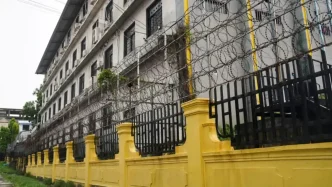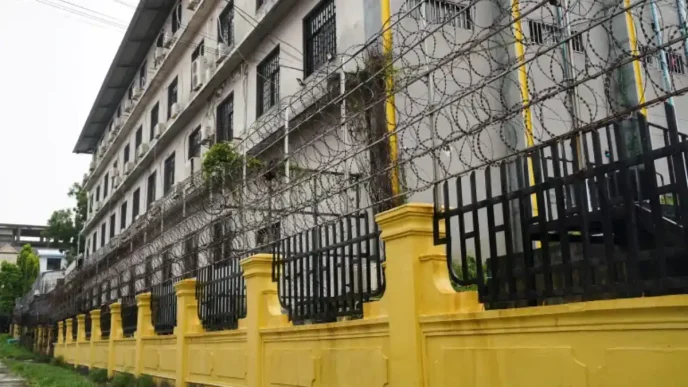In a significant step towards deepening military and strategic collaboration, Vietnam’s Prime Minister Phạm Minh Chính hosted Lao Deputy Minister of National Defence and Chief of the General Staff of the Lao People’s Army (LPA), Lieutenant General Saichay Kommasith, in Hanoi on 5 March 2025. The meeting underscored the enduring friendship between the two nations and reaffirmed defence cooperation as a cornerstone of their bilateral relationship, while also highlighting broader regional dynamics involving Cambodia.
A Shared History and Strategic Vision
The encounter between PM Chính and Lt Gen Kommasith was more than a diplomatic formality; it was a testament to the deep-rooted ties between Vietnam and Laos, forged through decades of mutual support in national building and defence. PM Chính emphasised the importance of the “great Vietnam-Laos friendship” in safeguarding both countries’ sovereignty and fostering sustainable development. He expressed Vietnam’s appreciation for Laos’ historical and ongoing support, pledging continued assistance as Laos navigates its developmental challenges.
Defence collaboration, as articulated during the meeting, is a critical pillar of this partnership. Both leaders acknowledged shared achievements in areas such as joint military planning, intelligence sharing, and strategic consultations. PM Chính highlighted Vietnam’s commitment to enhancing the capabilities of both armies through training, military exchanges, and dialogues. This commitment extends to facilitating mechanisms that strengthen mutual support, a priority that resonates with the historical solidarity between the two nations.
Outcomes of High-Level Talks
Lt Gen Kommasith briefed PM Chính on the successful discussions between the General Staff of the LPA and the Vietnam People’s Army, noting a shared resolve to accelerate joint initiatives. These initiatives are guided by the 2024 Vietnam-Laos High-Level Agreement and the outcomes of a recent trilateral meeting involving leaders from Vietnam, Laos, and Cambodia. Key areas of focus include strategic consultations through high-level meetings and the Defence Policy Dialogue mechanism, alongside efforts to reinforce border security by developing border village clusters.
Human resources training emerged as a priority, with plans to expand cooperation in logistics, information technology, and the defence industry. Both sides also committed to mutual support at multilateral forums, reflecting a broader ambition to contribute to regional stability. Additionally, economic development tied to defence collaboration was identified as a mutual goal, aligning with both nations’ aspirations for sustainable growth.
PM Chính proposed that the two armies enhance coordination to provide strategic advice on national defence and security matters. He stressed the importance of translating the outcomes of the February trilateral meetings in Ho Chi Minh City into actionable steps. These outcomes, involving party leaders and prime ministers from Vietnam, Laos, and Cambodia, aim to reinforce solidarity among the three nations while advancing existing cooperation mechanisms.
Key Priorities for Collaboration
Several critical areas for military cooperation were outlined during the discussions. These include increasing military exchanges and joint activities, as well as personnel training in emerging fields like cybersecurity. Collaboration in logistics and technical support was also prioritised, alongside efforts to strengthen the management and protection of the Vietnam-Laos border. The border region, often a hotspot for transnational crime, is seen as vital to maintaining peace, stability, and development in both countries.
The fight against transnational crime, including smuggling and trafficking, was identified as a shared challenge requiring coordinated action. Both leaders underscored the need to enhance public awareness of the special solidarity and comprehensive cooperation between Vietnam and Laos, fostering a deeper understanding of their shared history and future aspirations among their peoples and armies.
Vietnam’s Support for Laos in UN Peacekeeping
A notable highlight of the meeting was Vietnam’s commitment to supporting Laos in forming a UN peacekeeping force. While details remain limited, this pledge signals Vietnam’s willingness to share expertise and resources to bolster Laos’ capacity for international peacekeeping missions. If realised, this initiative could elevate Laos’ role in global security efforts, further aligning the two nations’ defence strategies with broader international objectives. However, the specifics of this support—whether it involves training, logistical assistance, or joint missions—remain to be clarified, and no official timeline has been confirmed.
Regional Implications and Trilateral Solidarity
The Vietnam-Laos defence dialogue cannot be viewed in isolation; it is part of a broader regional framework that includes Cambodia. The trilateral meetings referenced by both leaders point to a growing emphasis on collective security among the three Indochinese nations. This solidarity is particularly significant in a region marked by geopolitical tensions, including disputes in the South China Sea and the influence of major powers like China and the United States.
By strengthening border security and military cooperation, Vietnam and Laos are not only addressing bilateral concerns but also contributing to a regional bulwark against instability. The focus on border village clusters, for instance, aims to create stable, interconnected communities that can resist external pressures and internal threats like crime or unrest. This approach, if successful, could serve as a model for other regional partnerships.
Moreover, the emphasis on cybersecurity and information technology reflects an awareness of modern security challenges. As digital threats become more prevalent, the ability of Vietnam and Laos to collaborate in this domain could set a precedent for other ASEAN member states. While the specifics of these initiatives are yet to be fully fleshed out, the intent to prioritise such areas indicates a forward-looking approach to defence cooperation.
Challenges and Uncertainties
Despite the optimism surrounding the meeting, several challenges remain. The effectiveness of translating high-level agreements into tangible outcomes depends on both nations’ capacity to allocate resources and coordinate efforts. Border security, while a shared priority, is a complex issue involving not just military coordination but also socio-economic development in remote areas. If border village clusters are to succeed, they will require sustained investment and community engagement—areas where past initiatives have sometimes faltered.
Additionally, the speculative nature of some commitments, such as Vietnam’s support for a Lao UN peacekeeping force, introduces uncertainty. While the intention is clear, the lack of confirmed details means that the impact of this pledge remains to be seen. Analysts suggest that such initiatives, if not backed by concrete plans, risk becoming symbolic gestures rather than substantive contributions to regional or global security.
A Partnership Rooted in History, Looking to the Future
The meeting between PM Phạm Minh Chính and Lt Gen Saichay Kommasith reaffirms the deep ties between Vietnam and Laos, rooted in a shared history of struggle and mutual support. Defence cooperation, as both leaders articulated, is not merely a strategic necessity but a reflection of a unique friendship that continues to shape their national identities. From joint military planning to border security and emerging areas like cybersecurity, the scope of this partnership is expansive and ambitious.
Yet, as the two nations look to the future, the success of their collaboration will hinge on their ability to navigate practical challenges and translate agreements into action. The trilateral framework with Cambodia adds another layer of complexity but also opportunity, positioning Vietnam and Laos as key players in fostering regional stability. For now, the Hanoi meeting serves as a powerful reminder of the enduring solidarity between these two neighbours, a bond that remains as relevant today as it was in the past.
As both countries continue to balance national priorities with regional responsibilities, their defence ties will likely remain a critical anchor. Whether through joint training, border initiatives, or support for international peacekeeping, Vietnam and Laos are charting a path of cooperation that could resonate far beyond their shared frontier. For global observers, this partnership offers a glimpse into the evolving dynamics of South East Asia, where historical alliances meet contemporary challenges in a rapidly changing world.














